Five things to watch in markets in the week ahead
Introduction & Market Context
GigaCloud Technology Inc. (NASDAQ:GCT) released its Q2 2025 investor presentation on August 7, 2025, highlighting the company's continued expansion of its B2B marketplace for large parcel merchandise. The presentation comes as GigaCloud's stock surged 13.32% in premarket trading to $25.10, building on a 1.1% gain during the previous trading session.
The company, which joined the Russell 2000 index in 2024 and was named Forbes' #1 America's Most Successful Small-Cap Company that same year, has positioned itself as a pioneer in reinventing the supply chain for bulky goods through its proprietary Supplier Fulfilled Retailing (SFR®) model.
Quarterly Performance Highlights
GigaCloud reported total revenues of $323 million for Q2 2025, representing a 4% year-over-year increase. While revenue growth was modest, the company achieved more impressive metrics in other areas, particularly in marketplace activity and user growth.
As shown in the following financial snapshot:

The company posted a gross profit of $77 million with a 24% margin, while net income reached $35 million with an 11% margin. Adjusted EBITDA stood at $43 million, representing a 13% margin.
Most notably, GigaCloud Marketplace GMV (Gross Merchandise Value) reached $1.4 billion for the last twelve months ended June 30, 2025, growing 31% year-over-year. This substantial GMV growth was driven by significant increases in both sellers and buyers on the platform, with active 3P sellers growing 25% year-over-year to 1,162 and active buyers surging 51% to 10,951.
The company's buyer metrics show particularly strong momentum, as illustrated in this chart:
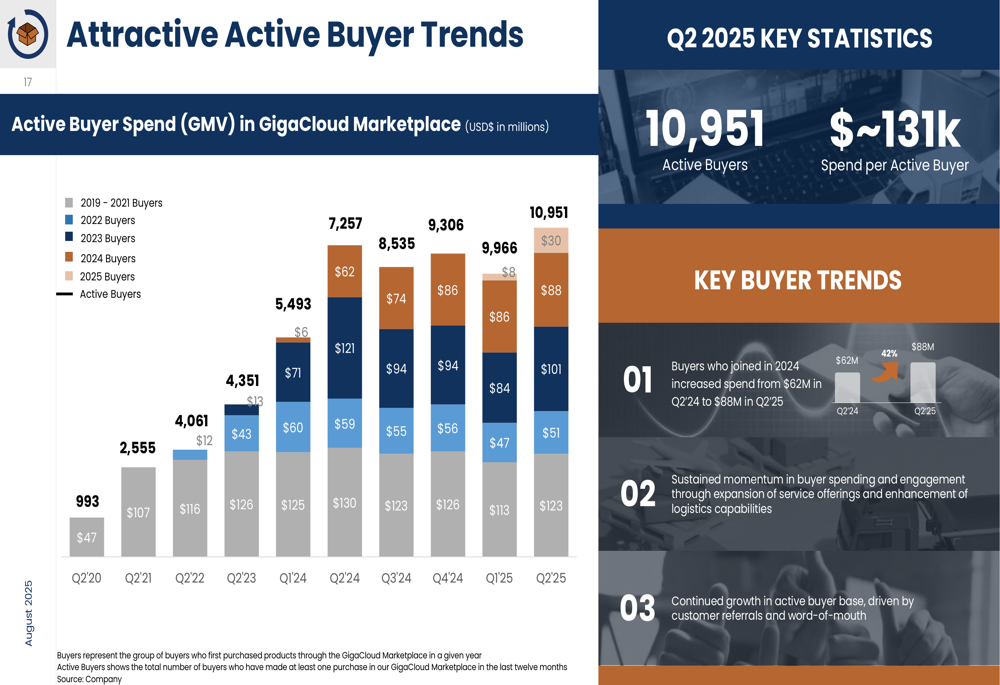
The presentation highlighted that $88 million was spent in Q2'25 from buyers in the 2024 cohort, up from $62 million in Q2'24, demonstrating strong retention and increased spending from existing customers. This growth has been achieved largely through service offerings and word-of-mouth advertising rather than heavy marketing expenditures.
Business Model and Strategic Initiatives
GigaCloud's presentation emphasized its unique SFR® business model, which aims to transform wholesale trade by reorganizing the supply chain into an efficiency-optimized B2B ecosystem.
The following diagram illustrates the SFR® model:
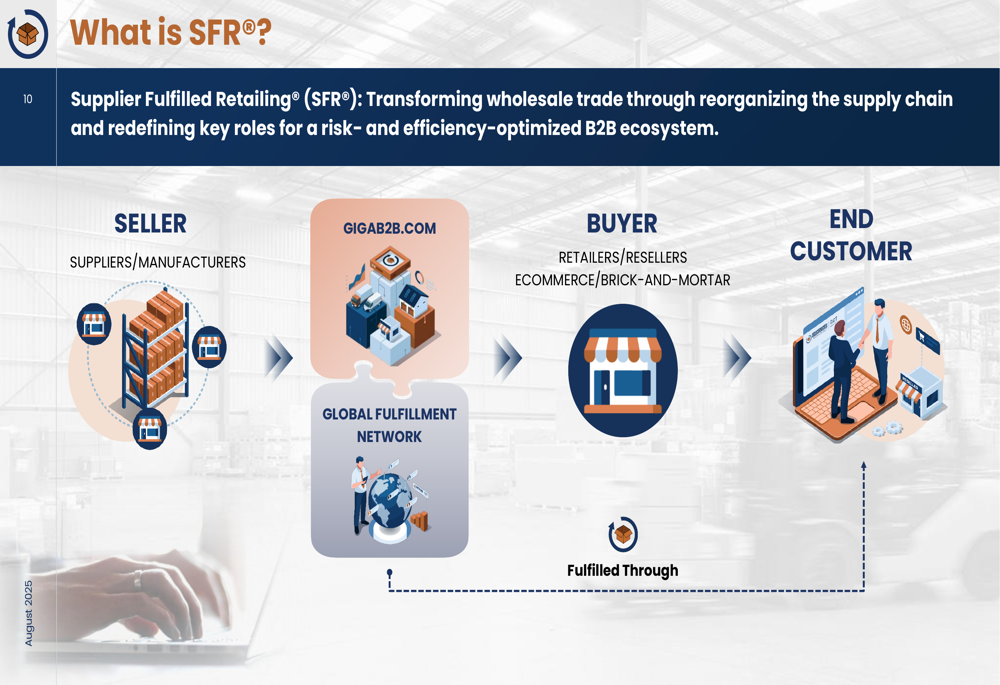
The model connects sellers (suppliers/manufacturers) with buyers (retailers/resellers) through the GigaB2B.com platform and GigaCloud's global fulfillment network. This approach eliminates many of the inefficiencies in traditional wholesale models by reducing inventory risk and providing end-to-end managed fulfillment.
GigaCloud's business consists of three interconnected components:
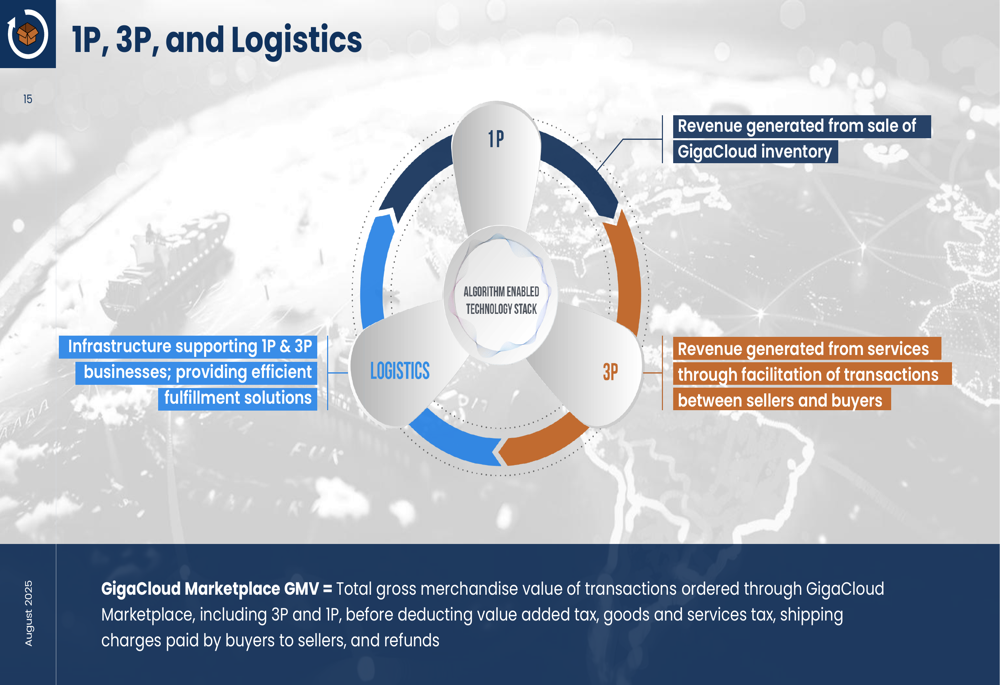
The 1P business generates revenue from the sale of GigaCloud inventory, while the 3P business earns revenue from services that facilitate transactions between third-party sellers and buyers. These components are supported by the company's logistics infrastructure, which provides efficient fulfillment solutions.
Global Expansion and Infrastructure
The presentation highlighted GigaCloud's extensive global infrastructure, which includes 36 facilities across five countries with over 10.7 million square feet of fulfillment space. The company's logistics capabilities include ocean transportation through 16 ports of destination, handling over 30,000 containers annually, and an extensive trucking network.
As shown in this infrastructure overview:
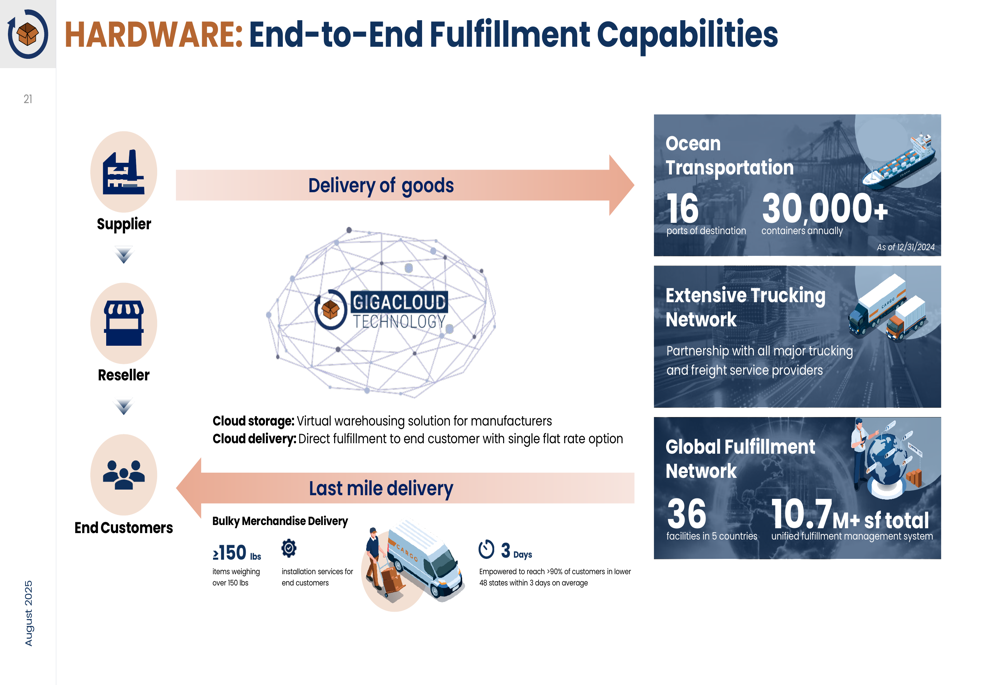
GigaCloud's fulfillment network enables last-mile delivery in three days on average, including for bulky merchandise weighing over 150 pounds. This infrastructure represents a significant competitive advantage in the large parcel merchandise space.
The company's global presence spans multiple continents:
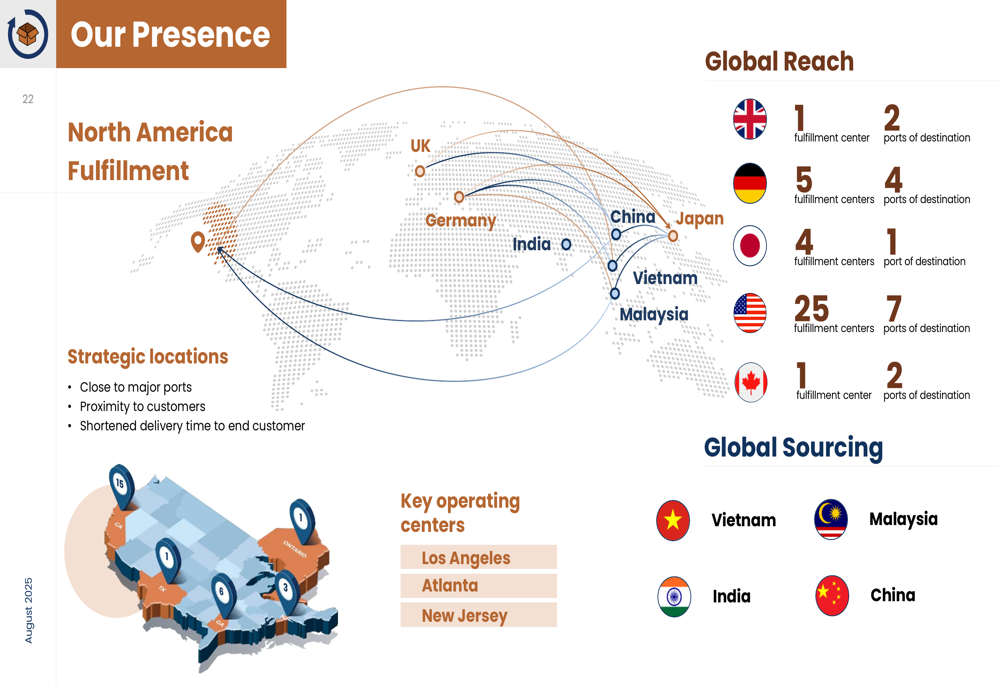
With key operating centers in Los Angeles, Atlanta, and New Jersey in North America, as well as presence in the UK, Germany, China, Japan, India, Vietnam, and Malaysia, GigaCloud has positioned itself strategically near major ports to shorten delivery times to end customers.
This global expansion aligns with information from the company's Q1 2025 earnings, which noted significant growth in European markets offsetting some challenges in the U.S. market.
Capital Allocation and Future Outlook
GigaCloud's capital allocation strategy has evolved since its 2022 IPO, which raised $41 million in gross proceeds. The company completed acquisitions of Noble House and Wondersign in 2023 for $87 million, expanding its capabilities and market reach.
The presentation also highlighted GigaCloud's commitment to returning value to shareholders through share repurchases, with $2 million in Class A shares repurchased under a 2023 authorization and a substantial $69 million repurchased under a 2024 authorization.
The company has also expanded its product offerings beyond furniture to include categories such as gardening, auto parts, toys, appliances, fitness equipment, and bath products, with over 50,000 SKUs available on its platform:
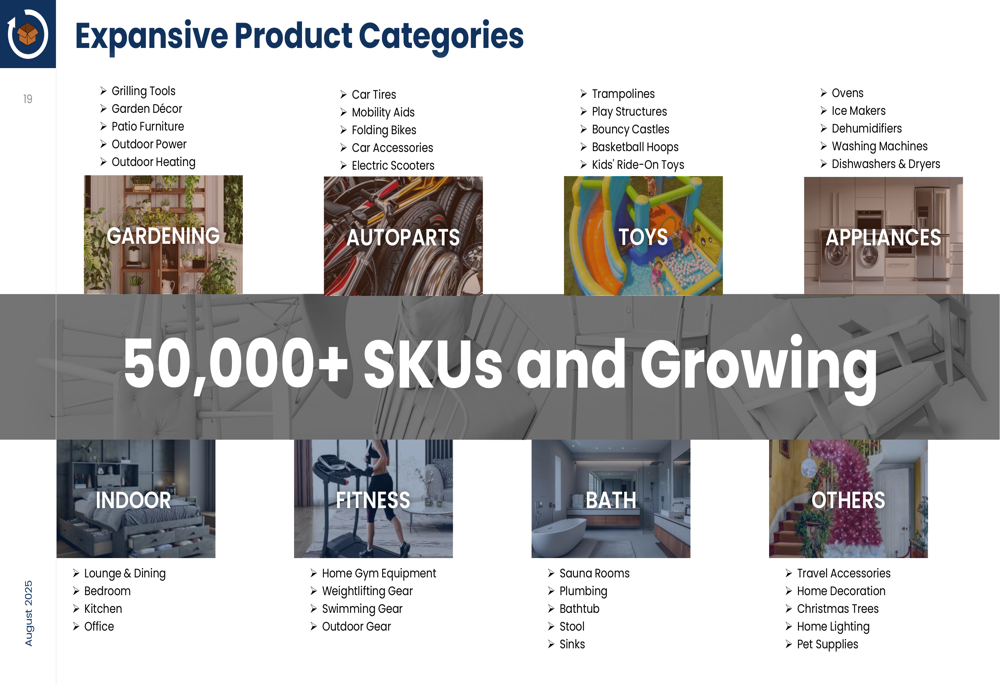
This product diversification strategy helps GigaCloud reduce dependence on any single category while leveraging its existing fulfillment infrastructure for a wider range of bulky items.
While the presentation did not provide specific forward guidance, the company's Q1 2025 earnings call had projected Q2 revenue between $275 million and $305 million. With the actual Q2 revenue coming in at $323 million, GigaCloud has exceeded the high end of its previous guidance range, potentially explaining the positive premarket stock movement.
As GigaCloud continues to expand its marketplace and global presence, investors will be watching for sustained growth in GMV and active users, as well as the company's ability to maintain healthy margins while scaling its operations across multiple markets and product categories.
Full presentation:
This article was generated with the support of AI and reviewed by an editor. For more information see our T&C.
